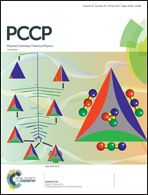Identifying electrochemical effects in a thermal–electrochemical co-driven system for CO2 capture
Abstract
Currently, the most promising amine absorption system for CO2 capture still faces the challenges of heavy steam consumption and a high energy penalty. Thus, a new thermal–electrochemical co-driven system (TECS) for CO2 capture was developed to resolve these problems. In the TECS, unknown electrochemical behaviors are quite essential to assess the CO2 capture performance. Electrochemical experiments were designed using response surface methodology (RSM) to identify electrochemical effects. The results show that the cathode process is slow and difficult, which is the main limitation in improving the performance of the TECS. Forced convection is necessary to improve the diffusion-controlled process and accelerate desorption. Four factors (Cu(II) molality, CO2 loading, temperature, KNO3 molality) play an auxo-action role in determining anode and cathode reaction rates. A regression model is developed based on the experimental data, and optimum operating conditions are obtained. Regeneration energy consumption reaches about 1.3 GJ per t CO2, a decline of up to 70% compared with the traditional process. In addition, preliminary CO2 desorption experiments suggest that the mass transfer ascribed to the electrochemical process accounts for over 50% of the overall mass transfer coefficient in the CO2 desorption process.



 Please wait while we load your content...
Please wait while we load your content...